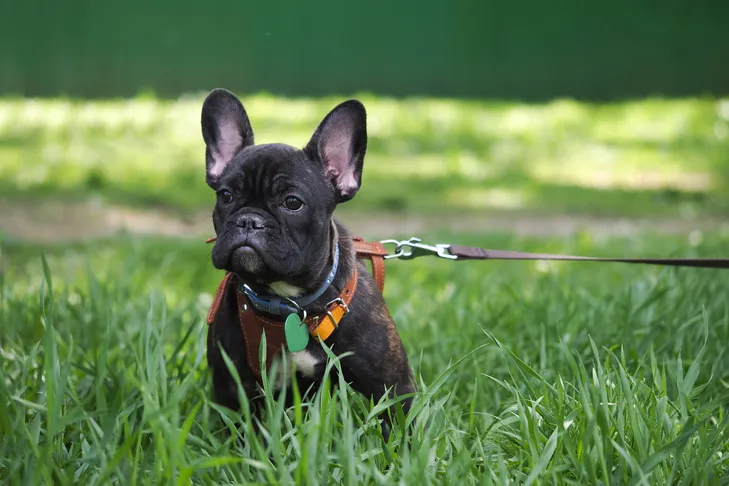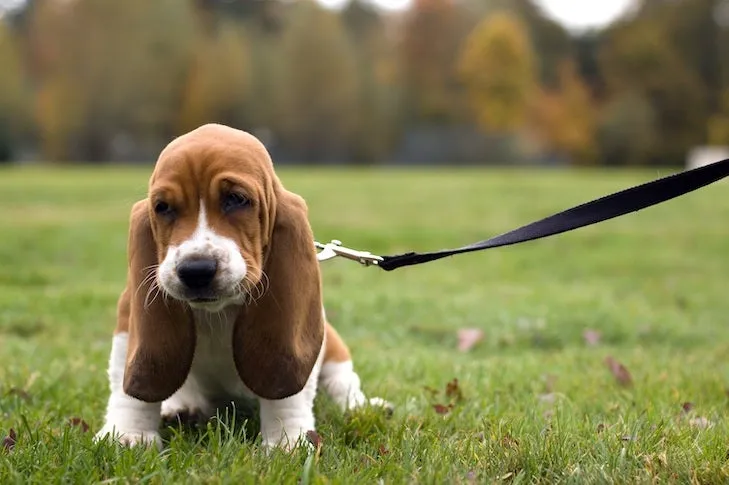Many dog owners assume that their canine companions instinctively know how to walk politely on a leash. However, much like learning to sit or stay, proficient leash walking is a skill that requires dedicated training. It’s an indispensable ability that will enhance every outdoor adventure you share with your dog, making walks more enjoyable and safer for both of you. At Dog Care Story, we understand the importance of early intervention and consistent practice. We’ll guide you through the optimal time to begin and the essential steps to cultivate excellent leash manners, drawing insights from established dog training expertise.
Laying the Foundation for Successful Leash Walking
Establishing a solid groundwork is crucial for developing good leash habits that will last a lifetime. Here’s how to start:
Introducing the Collar, Harness, and Leash
The very first step is to acclimate your dog, especially if they are a puppy, to wearing a collar or harness and a leash. Start by letting them wear these items for brief periods inside the house. Make these experiences positive by associating them with playtime, praise, and delicious treats. The goal is for your puppy to form a positive association, viewing collar-and-leash time as synonymous with fun and rewards. Understanding the optimal time for leash training can significantly impact success, often starting as early as 8-10 weeks of age for puppies.
Teaching a Positive Reinforcement Cue
Introduce a consistent sound cue that signals “food is coming” or “good job!” Many trainers use a clicker, while others prefer a verbal marker like “yes” or even a tongue cluck. The method remains the same: In a quiet, low-distraction environment, with your puppy wearing their collar and leash, make the sound. The instant your puppy turns their head towards you or makes eye contact, immediately reward them with a treat. Repeat this process several times. Soon, you’ll observe your puppy not only looking at you but also eagerly approaching for the treat after hearing the cue. This foundational step is key to building focus and responsiveness, which are vital for all general training tricks.
 French Bulldog puppy learning leash manners in a green field.
French Bulldog puppy learning leash manners in a green field.
Encouraging Your Puppy to Come to You
Once your puppy understands the cue, start incorporating movement. As they are on their way to you after hearing the cue, take a few steps backward. Reward them generously when they reach you. Gradually increase the distance, reinforcing them for following you. Continue this progression until your puppy consistently responds to the cue by coming to you and walking alongside you for several paces. Remember that puppies have short attention spans. Keep training sessions brief – typically 5-10 minutes – and always end on a positive note, before your puppy becomes mentally fatigued.
Practicing Leash Skills Indoors
With the foundational steps in place, it’s time to practice walking a few steps in a room with minimal distractions. For a puppy, simply feeling and seeing the leash around them, combined with the novelty of moving with you, will present enough of a challenge. Continue to offer praise and treats as your puppy learns to follow you while on the leash. This controlled environment allows them to focus on learning the motion and feeling of the leash without the overwhelming stimuli of the outdoors, setting the stage to teach your dog to walk to heel.
Venturing Outdoors for the First Time
Finally, your puppy is ready to test their developing skills in the real world. This step introduces a new level of complexity due to the myriad sounds, smells, and sights that will naturally intrigue your puppy. Be patient and keep these initial outdoor walks very short. During your walk, maintain constant vigilance over your puppy. If you notice them about to lunge towards something or become overly distracted, immediately use your cue sound and take a few steps in a different direction. Reward them with a treat as soon as they follow you. This proactive approach helps your puppy associate external distractions with refocusing on you and receiving a reward.
 Basset Hound puppy on a leash enjoying its first outdoor training session.
Basset Hound puppy on a leash enjoying its first outdoor training session.
Troubleshooting Common Leash Training Challenges
As your dog matures, explores new environments, and encounters novel distractions, you may face some common challenges, even if they initially learned to walk nicely. Mastering loose-leash walking techniques is beneficial for both comfort and control. Here are effective strategies for common leash training issues:
If Your Dog Pulls on the Leash
When your dog starts pulling ahead or in a different direction, immediately transform yourself into “a tree.” Stop moving completely and remain still. Refuse to budge until your dog returns to your side or the leash slackens. Avoid yanking or jerking the leash, or dragging your dog along. Consistency is key. For persistent pullers, alternative tools like front-clip harnesses or head halters can be effective aids designed to redirect their pulling behavior.
If Your Dog Lunges
If your dog tends to lunge at specific targets during walks—such as other dogs, cars, or skateboarders—proactive intervention is essential. Observe your dog closely and try to redirect their attention with a treat before they have the opportunity to lunge. Increase the distance between your dog and the perceived “target” of their frustration. Stay alert and anticipate potential triggers well in advance. While this behavior can be more prevalent in certain breeds, any dog can be startled or overstimulated by new or exciting stimuli. Building focus through amazing tricks for your dog can also help manage excitement.
If Your Dog Barks Excessively
Some dogs develop a habit of barking at other dogs or people during walks. Often, this behavior can stem from insufficient mental or physical stimulation. Ensure your dog receives an appropriate amount of exercise and mental enrichment for their age, breed, and energy level. If barking persists, employ a similar strategy to lunging: create distance from the trigger and offer treats before your dog starts to bark. With consistent practice, your dog will learn to shift their attention to you whenever they spot another dog, anticipating a reward instead of reacting.
Over time, you will gradually reduce the frequency of treats and troubleshooting required during your walks. It’s always a good idea to keep some treats on hand to randomly reinforce excellent leash-walking behavior, ensuring that good habits remain strong.
Conclusion
Leash training is an invaluable investment in your dog’s well-being and your shared enjoyment of the world outside your home. By starting early, introducing equipment positively, utilizing consistent cues, practicing in varied environments, and proactively addressing challenges, you can foster a confident and well-mannered walking companion. Remember, patience, positive reinforcement, and consistency are the cornerstones of successful dog training. At Dog Care Story, we believe every dog can learn to walk politely on a leash, transforming every outing into a pleasant experience for both ends of the lead.
References:
- AKC Family Dog
- Kathy Santo Dog Training
- AKC GoodDog! Helpline
